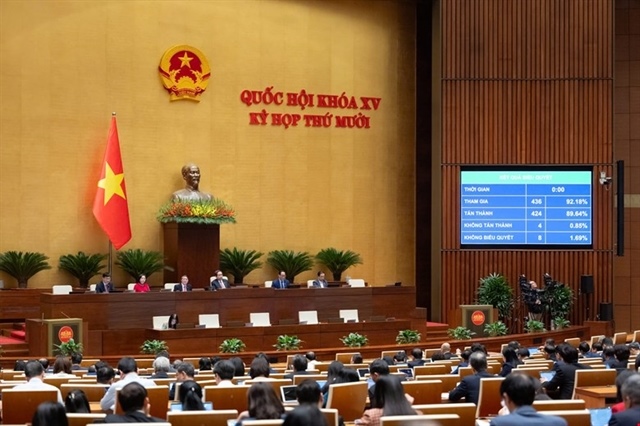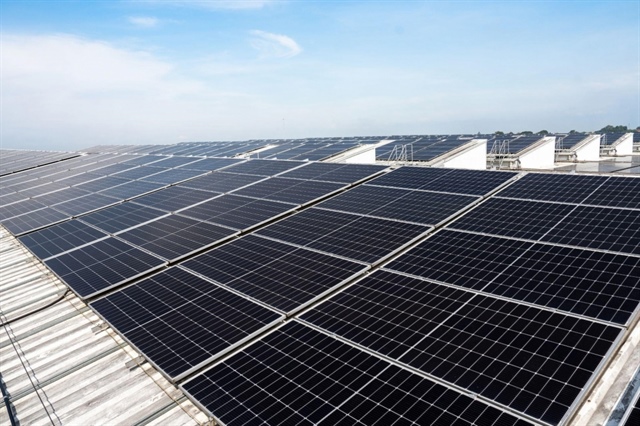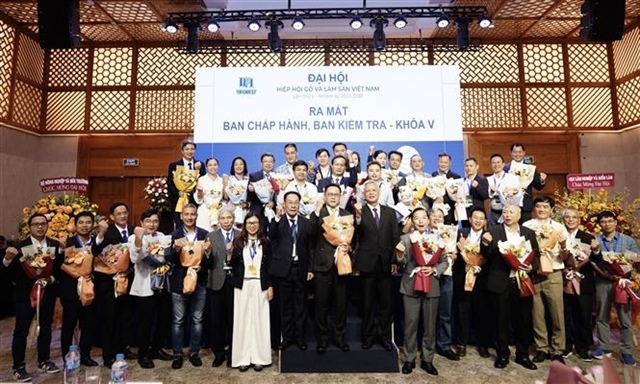Coal shortage threatens energy security in fossil-reliant Vietnam
Coal shortage threatens energy security in fossil-reliant Vietnam
A low coal supply has forced thermal power plants in northern Vietnam to shut down their generators, threatening to send the region into an electricity shortage as the fossil fuel remains the primary source for energy generation in the Southeast Asian country.

The Quang Ninh Thermal Power Plant, located in the namesake province in northern Vietnam, is capable of generating 7.2 billion kilowatt-hours of energy yearly when all four of its generators are in full swing.
However, since mid-November, the plant has been forced to temporarily shut down half of its generators due to an insufficient coal supply, resulting in the loss of more than ten million kWh in electricity production every day.
“We need an additional 200,000-250,000 metric tons of coal to maintain regular generation in the fourth quarter of 2018,” said Le Duy Hanh, chairman of the board of the Quang Ninh Thermal Power Company, which runs the plant.
The company is a subsidiary of state-run Vietnam Electricity (EVN), and is only allowed to buy coal from either of the two sources, Vietnam National Coal-Mineral Industries Corporation (Vinacomin) and military-owned Dong Bac Corporation.
“Our main supplier Vinacomin has not agreed to our requests to purchase more coal,” Hanh said.
Similarly, the Hai Phong Thermal Power Plant in the eponymous city in the north, which sources the fossil fuel from the same two suppliers, has been provided with only two million metric tons of coal out of the 3.4 million it needs to meet the generation goal of 7.1 billion kWh in 2018.
“We need 12,000 metric tons of coal daily to power our four generators, but there have been days when we were given only 2,000-3,000 tons,” said Nguyen Thuong Quang, general director of the Hai Phong Thermal Power Company.
With the current coal shortage, the Hai Phong plant can only maintain operations until the end of this month before it is forced to close down entirely, he said.
In the neighboring province of Ninh Binh, a coal-fired power plant is also grappling to keep its generators running when its coal reserves are quickly depleted due to increased production.
“We are running at 75 percent of our maximum capacity, which is already 20 percent higher than previous years,” said Trinh Van Doan, general director of the Ninh Binh Thermal Power Company.
Vietnam running out of coal
Thermal power plants have had to increase production, leading to rising demand for coal, as unfavorable weather conditions had made electricity generation from hydropower and wind power plants drop significantly this year, according to Doan.
Vinacomin said it supplied more than 23.6 million metric tons of coal to local thermal power plants in the first ten months of 2018, a 19 percent growth rate year-on-year.
Overall, Vinacomin expects to supply a total of 28.5 million metric tons of coal in 2018, 20 percent more than it did in 2017.
The sudden climb in domestic coal demand has posed a challenge for the corporation in sourcing enough coal to supply its partners, Vinacomin said in a statement.
Vinacomin added it is only licensed to mine 36-37 million metric tons of coal every year, while domestic coal demand is forecast to top 37 million metric tons in 2019.
To cope with the problem, the corporation has plans to start importing coal from 2019, a move it considers necessary to safeguard Vietnam’s energy security.
Forty-percent of Vietnam’s power generation comes from coal-fired power plants, according to EVN statistics.
Hydropower is the second-largest source of energy in Vietnam, contributing 39 percent of the country’s yearly output.
Wind power makes up 19 percent, while other power sources fill in the remaining two percent of energy generation in the Southeast Asian country.
Vietnam’s power plants have a combined capacity of 48,700 megawatts as of November 2018.
“It is expected that by 2019, coal-fired power plants will have made up 47.3 percent of Vietnam’s total power generation, rendering the fossil fuel crucial to our energy security,” EVN said in a statement.





















